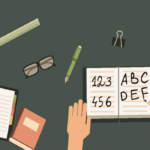When it comes to studying in school, there are a lot of pitfalls to watch out. These problems can cause a student to struggle to meet their school requirements. In some instances, a student will learn faster than the course curriculum dictates, resulting in an inefficient teaching process for the specific student.

In other cases, a student will learn slower than the course requires, causing the student to fail tests or even worse, fail the entire course. Other factors that can negatively affect the learning process is lack of resources, mismatched learning styles, or lack of flexibility needed to meet the course requirements.
The Benefits Of Distance Learning And Thinking Independently
Distance learning can remedy most of these problems, making the transition to a comfortable learning environment something every student can achieve. Distance learning is all about individuality. Each student gets to learn using his or her own unique methods. The course materials are presented to students who access the files and educational resources remotely, and the learning process in distance learning is much different than is done in a traditional university classroom.
There are two types of delivery methods in distance learning.
1. Synchronous
In synchronous learning, all students are taught at the same time, together. Basic classroom etiquette is observed despite students being located in different areas of the world. Many resources are used in the process of synchronous distance learning. Things like web and video conferencing, as well as internet radio, can be used to the student’s advantage. The focus is on everyone learning at the same pace in synchronous learning.
2. Asynchronous
In asynchronous learning, a student is prompted to learn at a schedule of their own discretion. There is no requirement for students to be together to learn. Forums, email, message boards, and more are used in asynchronous learning. This is a popular form of learning because students are allowed to learn at their own pace and fit school into their lives using their own schedules.
The benefits of distance learning are immense. Students can give themselves additional time to complete courses, as there is no time frame constraint. This is different from traditional schools where 30-40 students are all packed together. When this happens, sometimes an instructor or teacher will be forced to only briefly cover certain subjects, leaving some students unfulfilled.
Distance learning is also able to give students the chance to have 1-on-1 sessions with their instructors. Students that feel like they’re falling behind can get the extra support they need through more thorough coverage of specific course data. Using the Internet for distance learning is especially popular, and is providing students with the very best chance at successful schooling.



